Audi Car Dashboard Symbols and Meanings: Tire Pressure!
Audi vehicles are equipped with a variety of dashboard symbols designed to alert the driver about the car’s status and potential issues.
These symbols cover a range of functions and warnings, including engine management, braking system, oil pressure, and tire pressure.
Knowing what each symbol means is essential for maintaining the health of your vehicle and ensuring safe driving conditions.
The dashboard symbols in an Audi can generally be categorized into warning lights and indicator lights. Warning lights are often red or yellow and indicate a potential issue or critical warning that requires immediate attention.
Indicator lights are usually green or blue and serve to inform the driver that a certain system is in use.
Here’s a brief overview:
- Red symbols: Immediate attention needed, such as the engine temperature warning.
- Yellow or orange symbols: A warning that is important but not immediately critical, like the check engine light.
- Green or blue symbols: Indicators that a system is engaged, for example, the headlights.
Familiarizing yourself with Audi dashboard symbols ensures timely maintenance and enhances driving safety.
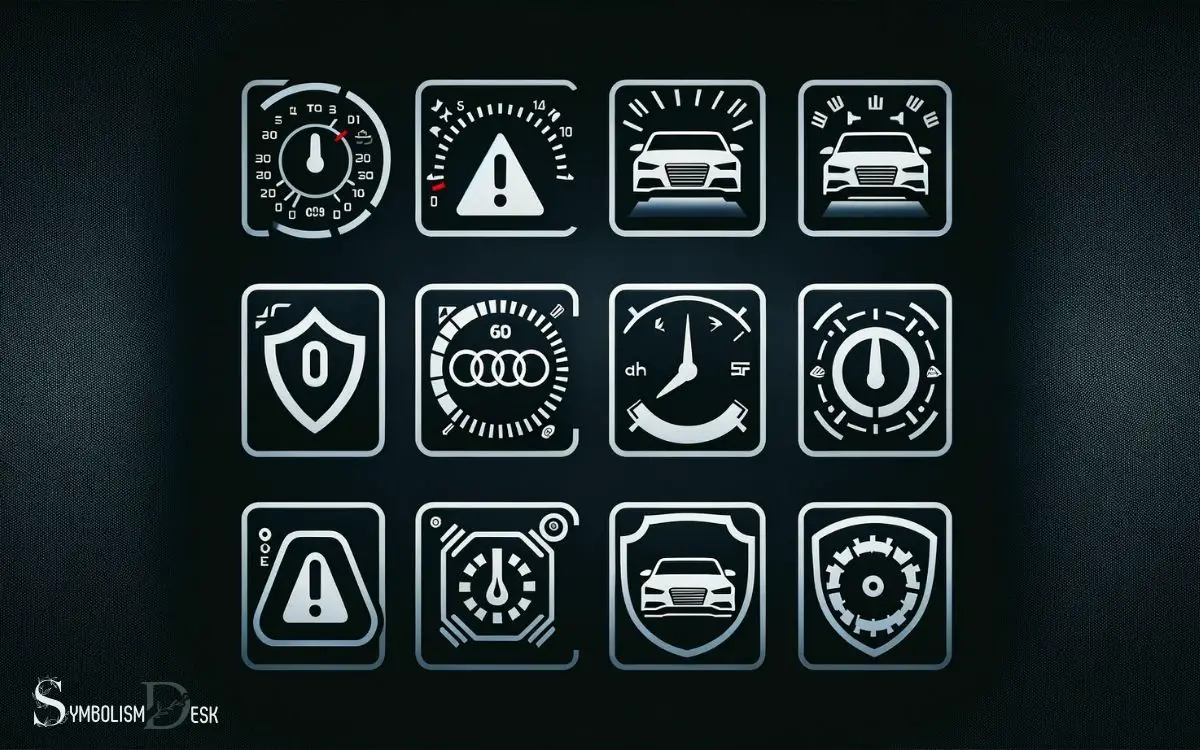
Key Takeaway
Comprehensive Guide to Audi Dashboard Symbols and Meanings
| Symbol | Color | Meaning |
|---|---|---|
| Engine Warning | Yellow/Red | Indicates a potential engine issue or malfunction |
| Oil Pressure Warning | Red | Alerts when the oil pressure falls below the safe threshold |
| Brake System Warning | Red | Could signify an issue with the braking system or low brake fluid |
| Battery Alert | Yellow/Red | Indicates a battery charging issue |
| ABS Warning | Yellow | Problem with the Anti-lock Braking System |
| Tire Pressure Warning | Yellow | Tire pressure is either too high or too low |
| Airbag System | Yellow | Malfunction within the airbag system |
| Seat Belt Reminder | Red | Reminder to fasten the vehicle’s seat belts |
| Door Open | Red/Yellow | Indicates that a door is not fully closed |
Engine Warning Symbols
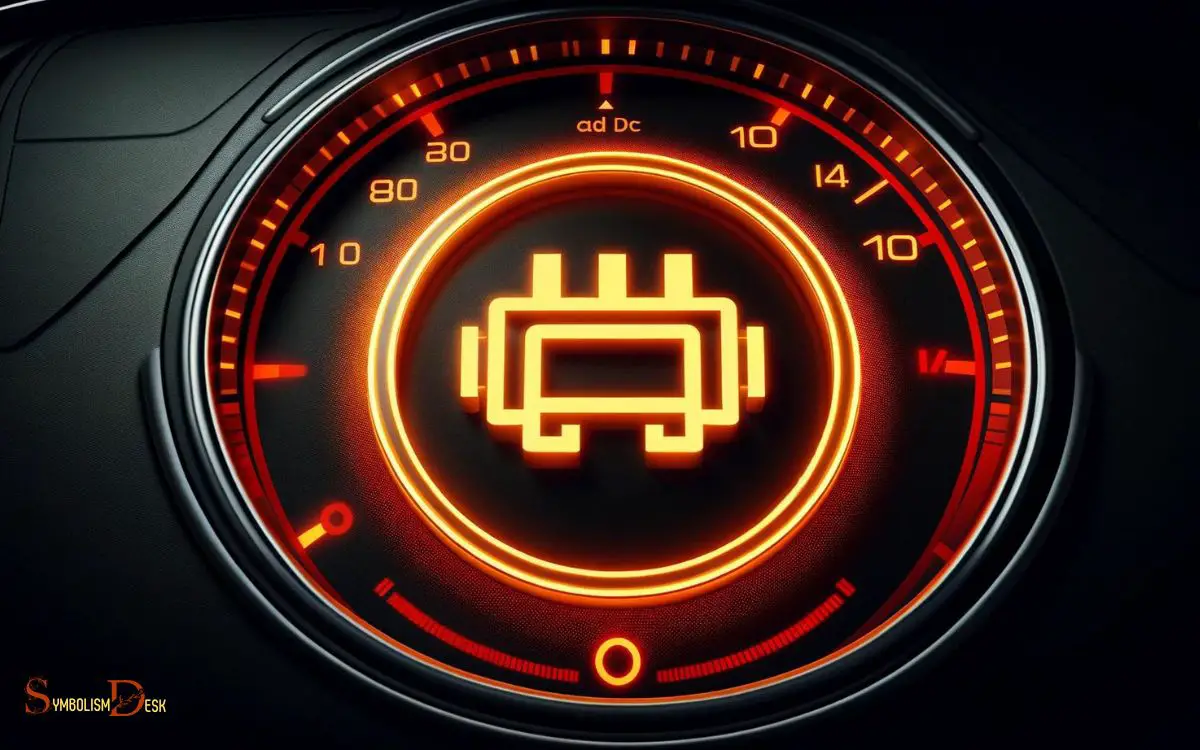
When an Audi car’s engine warning symbol illuminates, it indicates a potential issue with the vehicle’s engine that requires immediate attention.
This symbol typically looks like an engine block, sometimes with the word “CHECK” or “CHECK ENGINE.”
It can signify a range of problems, from minor issues like a loose gas cap to more severe issues like engine misfires or low oil pressure. Ignoring this warning can lead to further damage and costly repairs.
If this light comes on, the driver should pull over when it’s safe to do so and check for any obvious issues, such as a loose gas cap.
If there are no apparent problems, it’s essential to have the vehicle inspected by a qualified mechanic as soon as possible. Now, let’s delve into the brake system symbols.
Brake System Symbols
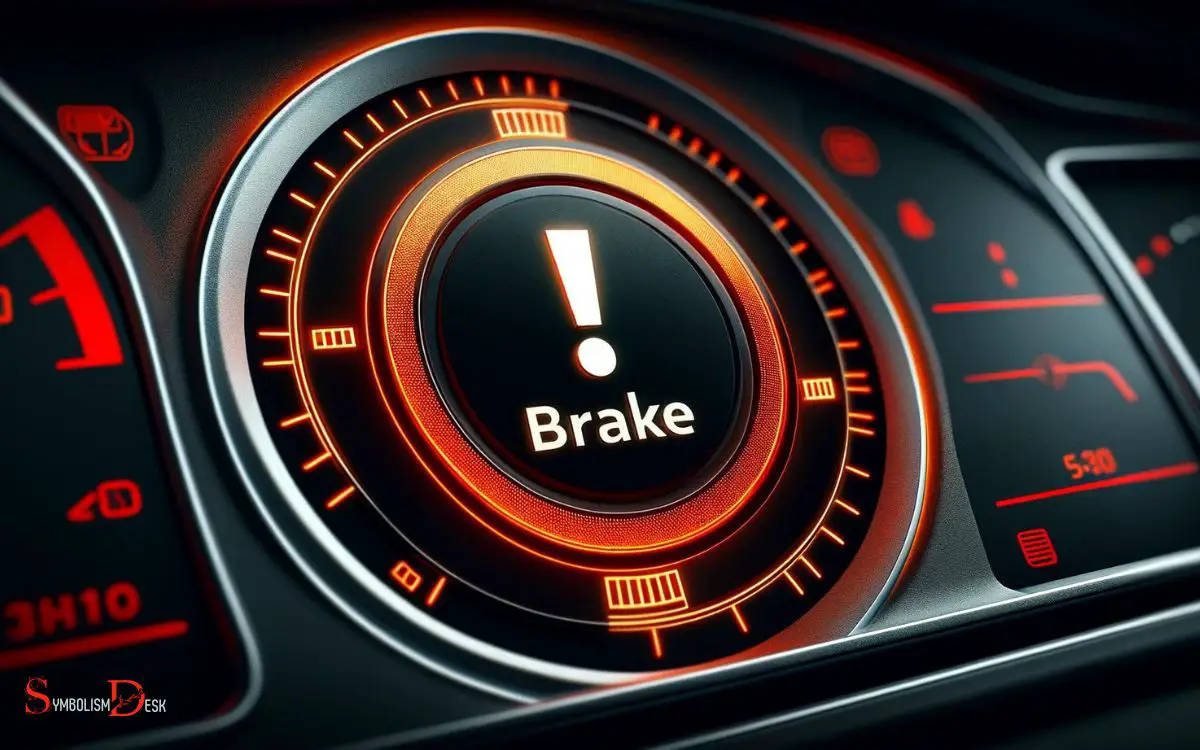
The brake system symbols in an Audi car display important indicators related to the vehicle’s braking system.
One common symbol is the exclamation mark inside a circle, which typically indicates low brake fluid or a brake system malfunction.
If this light appears, it is important to check the brake fluid level and inspect the brake system for any issues.
Another symbol to be aware of is the ABS (anti-lock braking system) light, which signifies a problem with the ABS system.
This could mean that the ABS is disabled, and the vehicle may not have the anti-lock brake function during a sudden stop.
If any of these symbols illuminate on the dashboard, it is crucial to address the underlying issue promptly to ensure the safety and functionality of the vehicle’s braking system. Ignoring these warning indicators could lead to reduced braking efficiency or even complete brake failure, putting you and other road users at risk. Understanding the brake warning light symbol meaning is essential, as it often points to issues such as low brake fluid, worn brake pads, or a malfunction in the braking system. Always consult your vehicle’s manual or a professional mechanic to diagnose and resolve the problem effectively.
Tire Pressure Monitoring Symbols
When driving an Audi, it is important to pay attention to tire pressure monitoring symbols on the dashboard. These symbols typically include a low tire pressure warning or a check tire pressure alert.
Understanding these symbols can help drivers maintain proper tire pressure for optimal performance and safety.
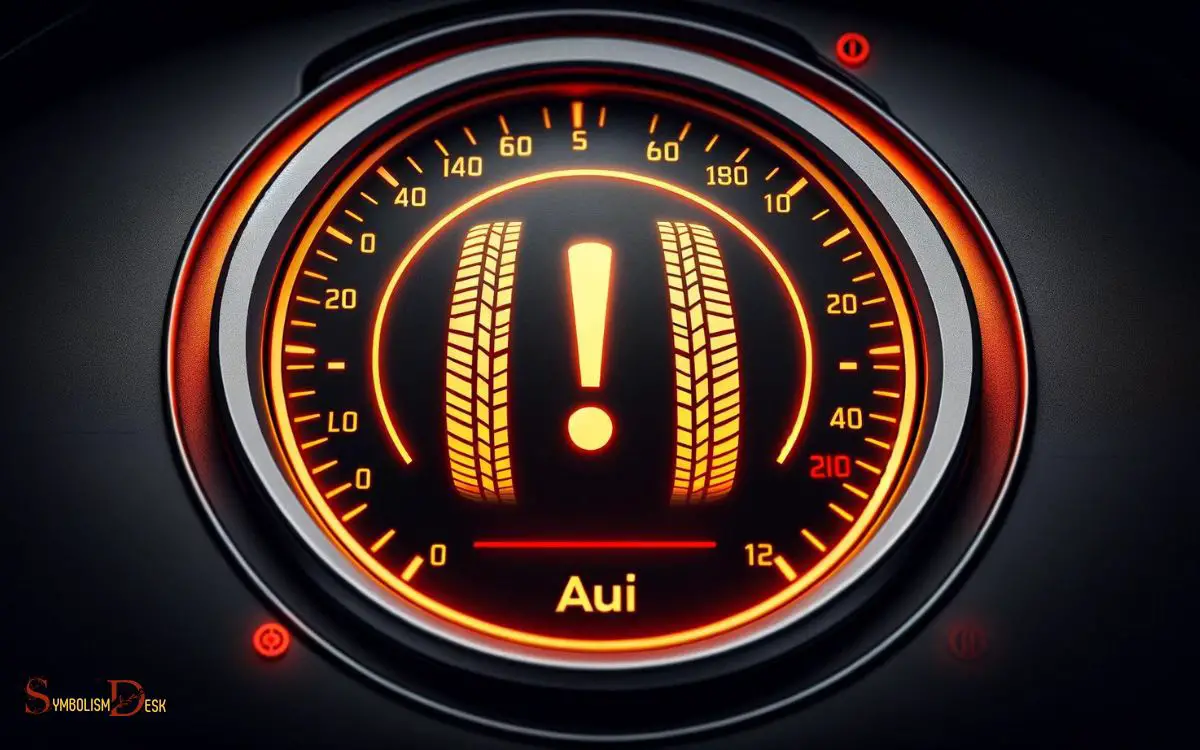
Low Tire Pressure Warning
Indicating a potential issue with tire pressure, the low tire pressure warning symbol on an Audi dashboard alerts the driver to check and adjust tire pressure as needed.
- Immediate Action: The driver should pull over at the earliest safe opportunity to visually inspect the tires for any obvious signs of deflation or damage.
- Tire Inflation: If no visible issues are found, the driver should use a tire pressure gauge to check the inflation level of each tire and add air as necessary.
- Professional Inspection: If the warning persists after inflating the tires, it is advisable to seek professional assistance to diagnose and rectify any underlying issues.
It’s crucial to address low tire pressure promptly to ensure optimal vehicle handling, fuel efficiency, and tire longevity.
Regularly checking and maintaining proper tire pressure can enhance safety and overall driving experience.
Check Tire Pressure Alert
The Check Tire Pressure Alert symbol on an Audi dashboard signifies the need to monitor and adjust tire pressure for optimal vehicle performance.
This alert is part of the Tire Pressure Monitoring System (TPMS), which helps ensure that the tires are properly inflated.
When this symbol illuminates, it indicates that at least one of the tires has low pressure, potentially affecting handling, traction, and tire wear.
It’s essential to check the tire pressure using a tire gauge and inflate the tires to the recommended pressure levels specified in the owner’s manual or on the driver’s side door jamb.
Ignoring this warning can lead to decreased fuel efficiency, compromised safety, and uneven tire wear. Regularly monitoring and maintaining proper tire pressure is crucial for a smooth and safe driving experience.
Oil and Fluid Level Symbols
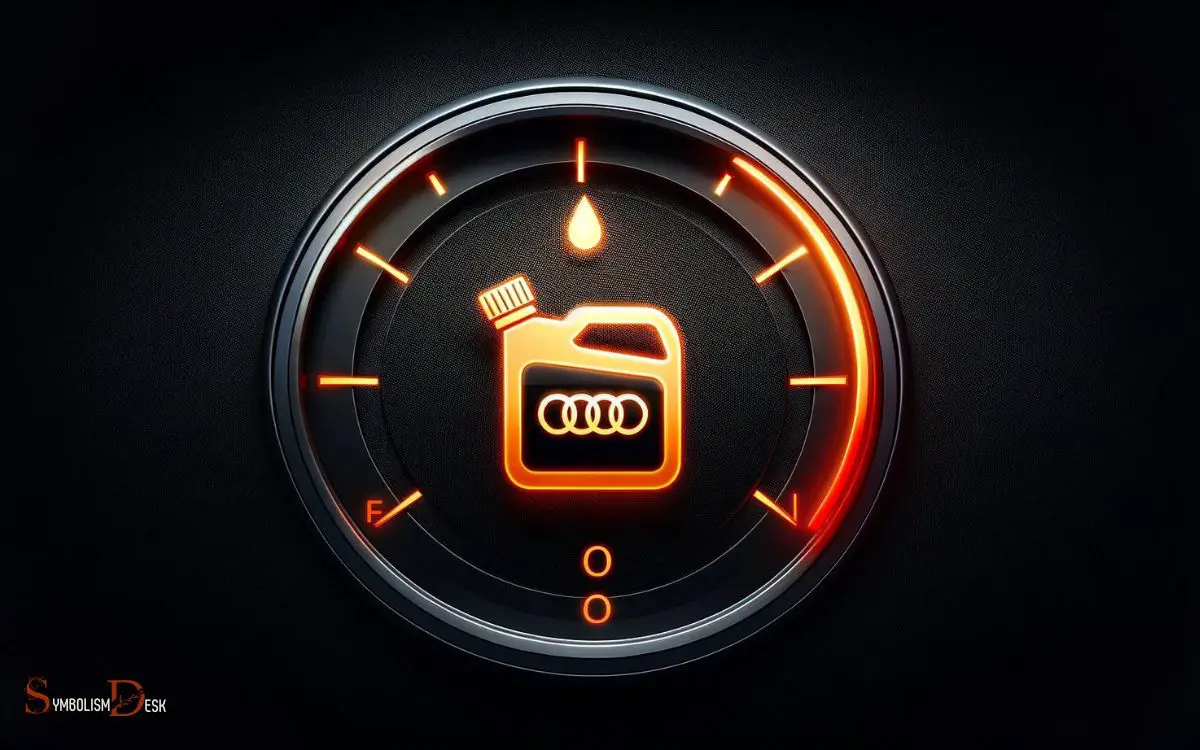
One of the most critical indicators on an Audi car dashboard is the oil and fluid level symbols, which provide essential information about the vehicle’s maintenance needs.
- The oil can symbol indicates that the engine oil level is low and requires topping up to prevent engine damage.
- It is crucial to address this symbol promptly to avoid potential engine problems.
- The coolant level symbol alerts drivers when the engine coolant is below the recommended level.
- Ignoring this symbol can lead to overheating and severe engine damage.
- The windshield washer fluid symbol notifies the driver when the washer fluid reservoir is running low.
- It’s important to refill the washer fluid to ensure clear visibility while driving.
Understanding and responding to these symbols promptly can help maintain the vehicle’s performance and prevent potential damage.
Electrical System Symbols
The electrical system symbols on an Audi’s dashboard play a crucial role in keeping the vehicle’s electrical components in check.
These symbols alert the driver to potential issues with the voltage, battery charge, or other electrical systems.
Understanding these symbols can help drivers address any electrical problems promptly and ensure the vehicle operates smoothly.
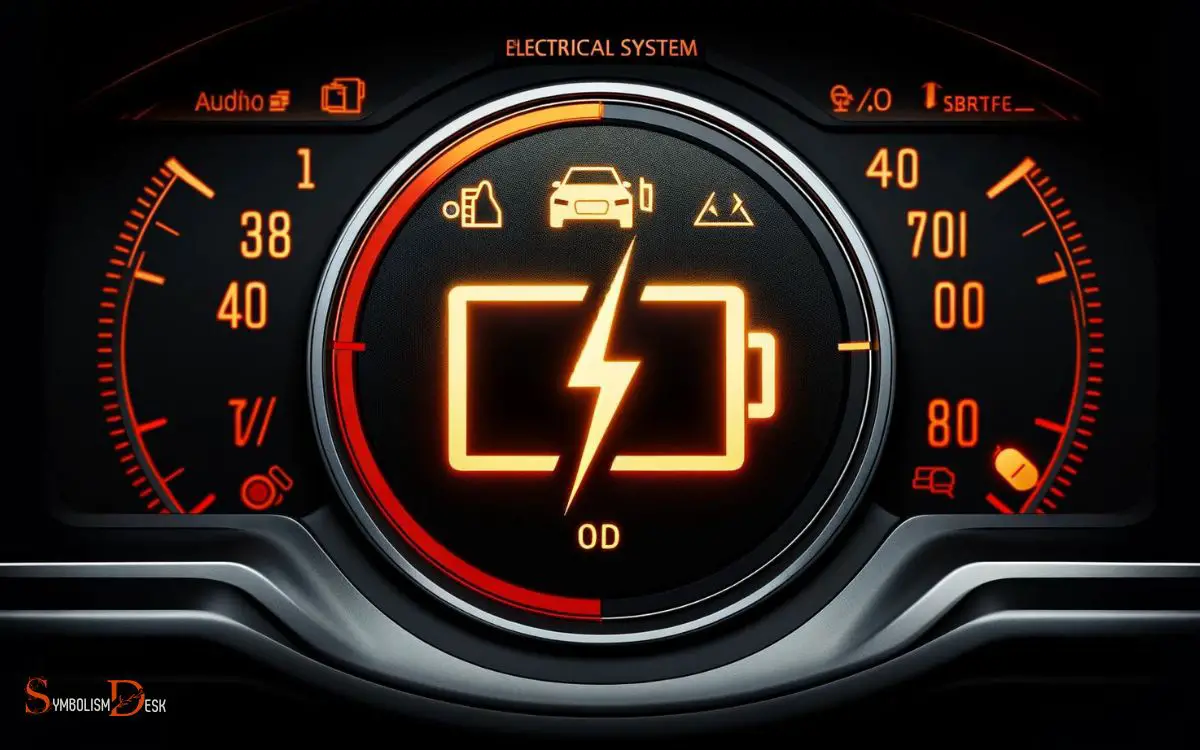
Voltage Warning Light
An Audi car’s voltage warning light illuminates to indicate potential issues with the electrical system.
When this light comes on, it is essential to understand its meaning and potential causes:
- Battery Malfunction: The voltage warning light may indicate a problem with the battery, such as low voltage or a faulty connection.
- Faulty Alternator: A failing alternator can also trigger the voltage warning light, leading to insufficient power generation for the vehicle’s electrical systems.
- Electrical System Issues: The light may also signal broader electrical system issues, such as wiring problems or a malfunctioning voltage regulator.
Understanding these potential causes can help Audi owners address the underlying electrical issues promptly, ensuring the vehicle’s safety and performance.
Battery Charge Symbol
Illuminating when the battery is not charging properly, the battery charge symbol on the Audi dashboard alerts the driver to potential electrical system issues. This symbol typically resembles a battery with a positive and negative sign on it.
When it lights up, it indicates that the battery is not receiving a charge from the alternator. This could be due to a faulty alternator, loose or corroded battery connections, or a broken drive belt.
If this symbol appears while driving, it’s essential to address the issue promptly to avoid a potential breakdown.
Drivers should have the vehicle’s electrical system inspected by a qualified technician to diagnose and resolve the underlying problem. Ignoring this warning may lead to a drained battery and a stranded vehicle.
Airbag and Seatbelt Symbols
Airbag and seatbelt symbols on an Audi dashboard often illuminate briefly upon starting the vehicle. These symbols are crucial for the safety of the driver and passengers.
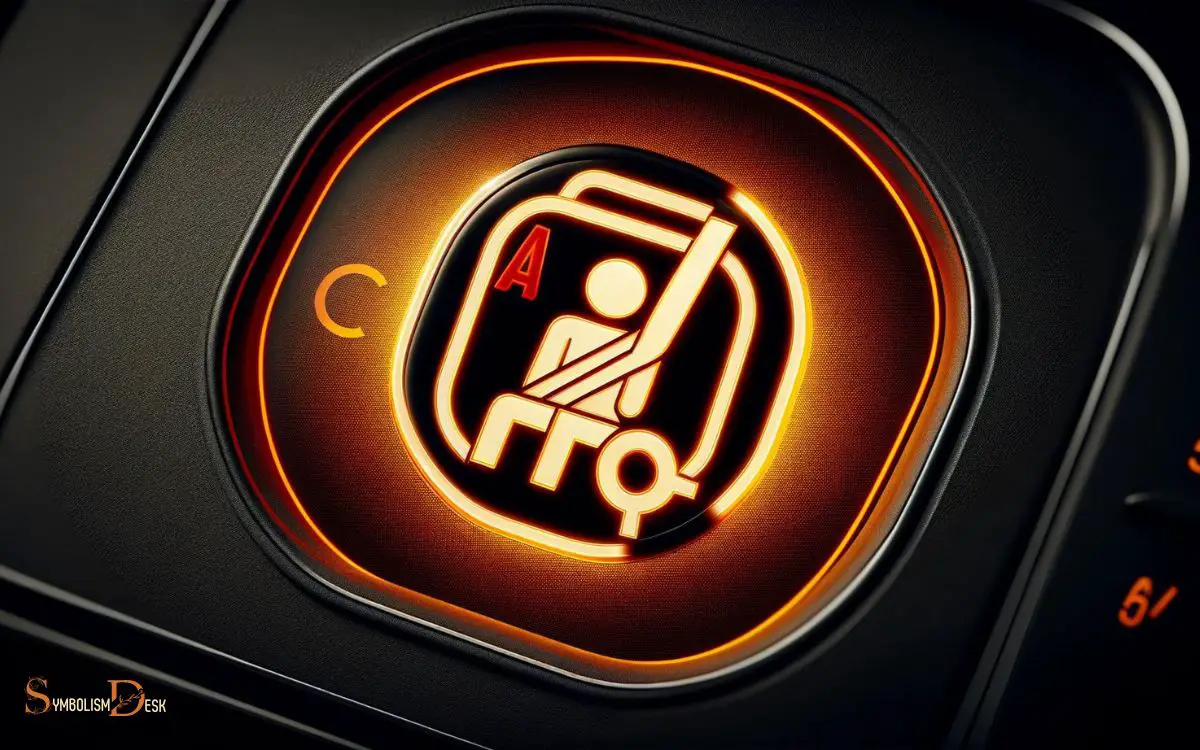
Here are some important points to understand about these symbols:
Airbag System:
- The airbag symbol indicates the status of the airbag system.
- If the symbol stays illuminated or flashes while driving, it may indicate a malfunction that needs immediate attention.
- In the event of a crash, the airbag system may deploy, providing crucial protection to the occupants.
Seatbelt Reminder:
- The seatbelt symbol serves as a reminder to fasten seatbelts.
- This symbol will typically remain lit until the seatbelt is fastened.
- Fastening seatbelts is an essential safety measure for all occupants in the vehicle.
Warning and Information Symbols
The dashboard of an Audi car displays warning and information symbols that convey important messages about the vehicle’s status and potential issues.
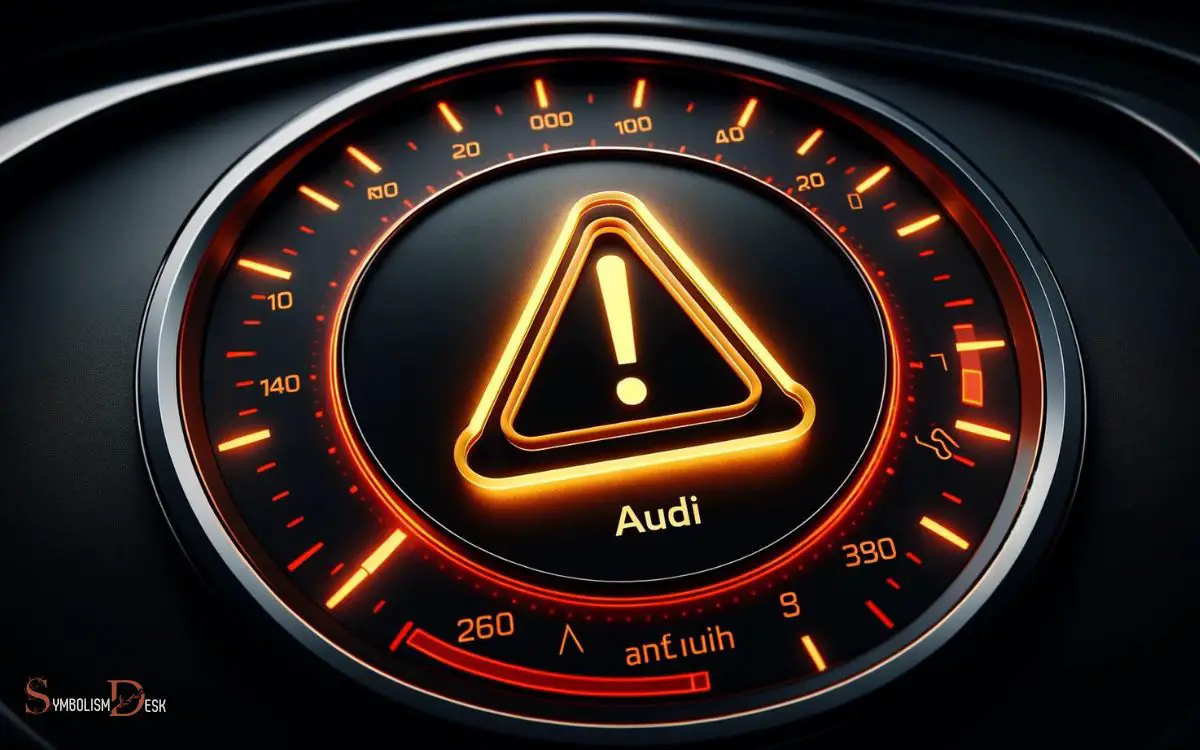
These symbols are designed to alert the driver to various conditions such as low fuel, engine problems, or potential system malfunctions. Understanding these symbols is crucial for maintaining the vehicle’s performance and safety.
Familiarizing oneself with these symbols can help Audi car owners to promptly address any potential issues and ensure the vehicle’s optimal functioning and safety.
Conclusion
Understanding the dashboard symbols in your Audi car is crucial for safe driving. Did you know that according to a study, nearly 20% of car accidents are caused by neglected maintenance issues?
So, taking the time to familiarize yourself with these symbols can help prevent potential problems and keep you and your passengers safe on the road. Stay informed and stay safe!






